#vintage Greenwich Village
Text

William Steig drew this handbill to promote Washington Square's semi-annual art exhibition, 1933.
Photo: Swann Galleries
#vintage New York#1930s#William Steig#Washington Square Art Show#Greenwich Village#vintage Greenwich Village#art exhibit#handbill#illustration#vintage NYC
58 notes
·
View notes
Text
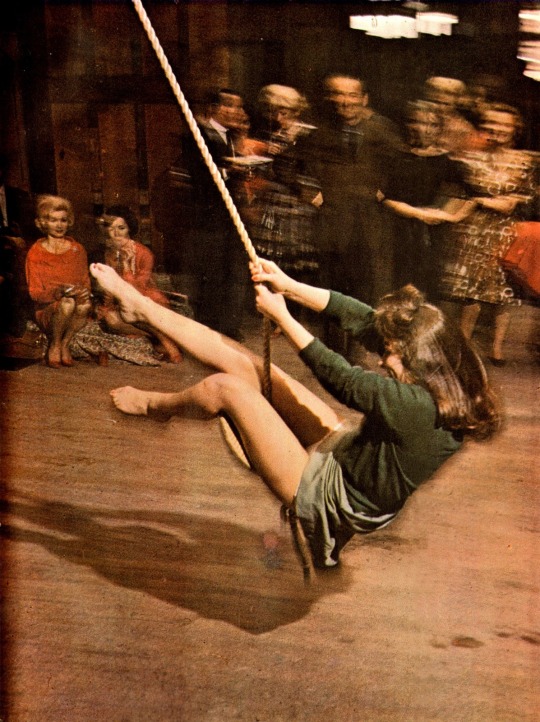

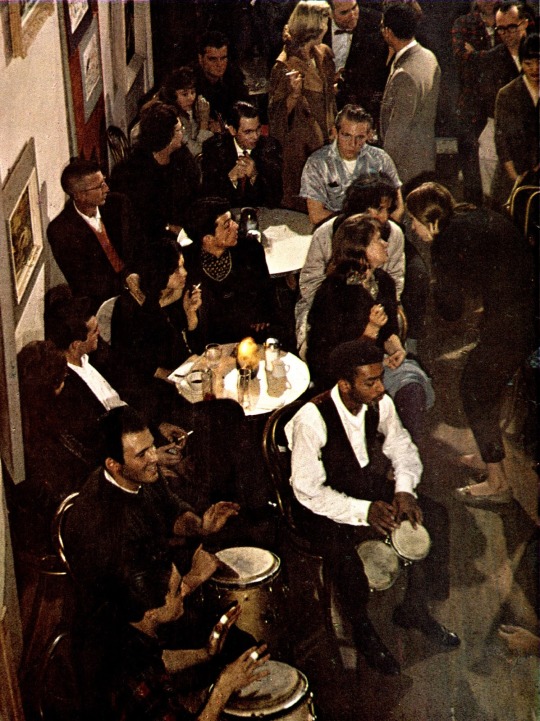
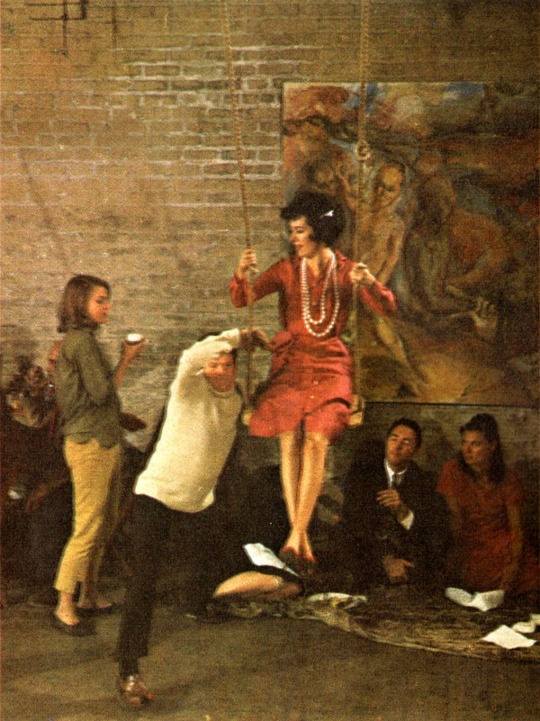
1963.
314 notes
·
View notes
Text

📸: New York Curbed
#home & lifestyle#boho decor#bohemian style#vintage#vintage house#interiors#interior design#kitchen#greenwich village
24 notes
·
View notes
Text


Greenwich Village, Manhattan, New York City, 2016
#greenwich village#bleecher street records#BSR#Music Inn#manhattan#new york city#new york#nyc#Bohemia#bohemian#record store#vintage shop#west side#mine#personal#travel#bohemian capitol#adventures
153 notes
·
View notes
Text

Anne Bancroft in Greenwich Village 1962
#vintage#beauty#smoking#cigarette#smoking cigarette#sexy smoking#actress#hollywood#anne bancroft#greenwich village#bakery#vintage actress#vintage hollywood
19 notes
·
View notes
Text

#1974#1970s#people#art#greenwich village#new york city#sculpture#vintage#sculptor#found photo#photography#vernacular photography#found photography#old photography#old photo#old photos#70s#60s 70s 80s 90s#vintage photography#vintage photos#vintage photo#found photos
9 notes
·
View notes
Text

Detail portrait of the iconic folk music club and bar 'The Fat Black Pussycat Theatre' in June, 1963. The theatre and bar, situated on MacDougal Street with an entrance on Minetta Lane, was a popular performance venue for many legendary folk musician including Richie Havens, Tiny Tim, Mama Cass Elliot, and Shel Silverstein. Sources have cited that a largely unknown Bob Dylan wrote 'Blowin' in the Wind' at the Fat Black Pussycat in April, 1962.
📸 David Gahr
#fat black pussycat theatre#music history#folk music#greenwich village#nyc#1960s#photography#black and white photography#vintage photography#cass elliot#shel silverstein#bob dylan#richie havens
12 notes
·
View notes
Text

Assorted Madness
#cafe bizarre#assorted madness#vintage records#vintage vinyl#spoken word#poetry#beatniks#musitron#greenwich village#vintage new york#1959
190 notes
·
View notes
Text
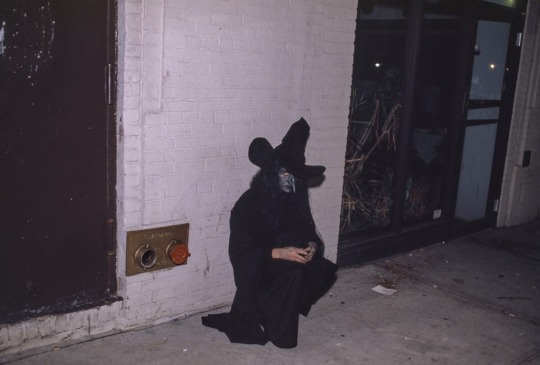
Discarded witch.
photo & caption by Mariette Pathy Allen [website] [instagram]
4 notes
·
View notes
Text




Ode to New York if you will
#new york aesthetic#classic academia#dark academia#romantic academia#romanticize everything#romantisism#romanticize life#light academia#academia aesthetic#nyu#vintage#vintage photography#old new york#greenwich village#the village#city life#city aesthetic#i love new york#bohemian#beatnik#hippie#counterculture#stem academia#new york university#greenwich#lower east side#manhattan
3 notes
·
View notes
Text
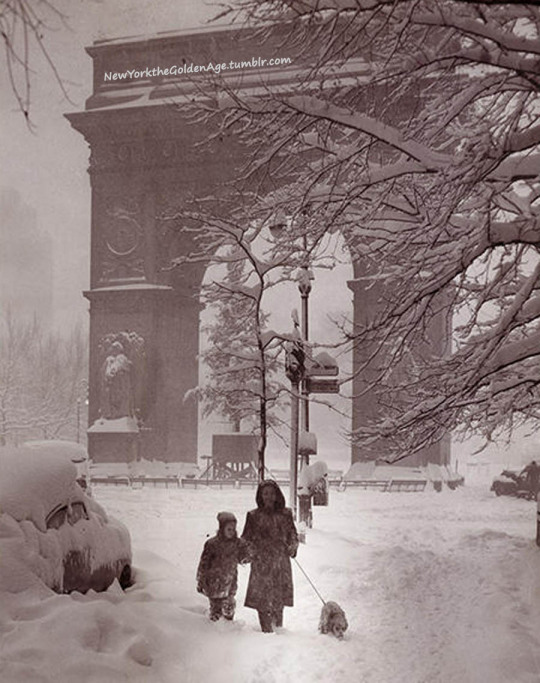
Walking the dog in a snowstorm in Washington Square Park, ca. 1950s.
Photo: TimeOut NY
#vintage New York#1950s#Washington Square#Washington Square Arch#Washington Square Park#snowstorm#dog walking#walking the dog#mother & child#vintage Greenwich Village
233 notes
·
View notes
Text

1914 Outside of an unidentified neighborhood saloon on 11th Street, Greenwich Village. From New York City-Vintage History, FB.
84 notes
·
View notes
Text
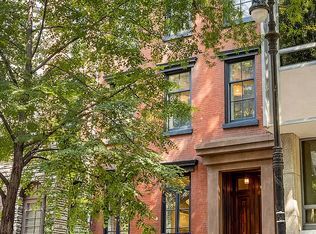
Here's an 1854 Anglo-Italianate 5 story townhouse in the Greenwich Village section of New York City. 5bds, 7ba, $15.5M and it's already under contract. The most wonderful thing about it is in the backyard, though.
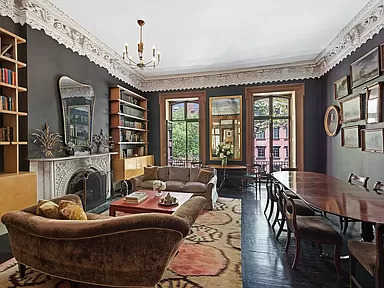
Love the sophisticated main room, and the view, but tbh, for this kind of money, I'd really want a separate dining room.
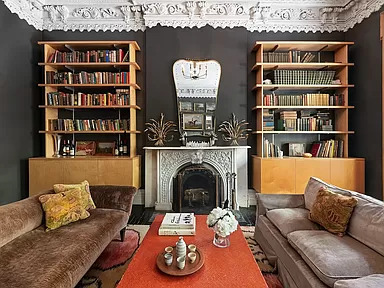

I don't care for the floating MCM shelving with that fireplace. I think that the fancy crown molding is probably a wallpaper border.
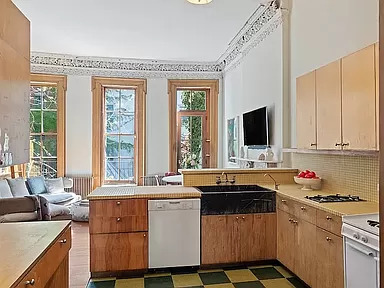


A kitchen / family room. I like the fireplace and book shelving, but it looks like a wall was taken down in the kitchen and the kitchen was last remodeled around the mid-century. The linoleum floor looks original.

One of the stair cases- there are 5 floors, so this is just one of several. I like the niche. (There is an elevator, too.)

The primary bedroom is spacious and modern with an original fireplace.

Cute bath with a vintage tub and new shower. Look at how low the faucets are, though.
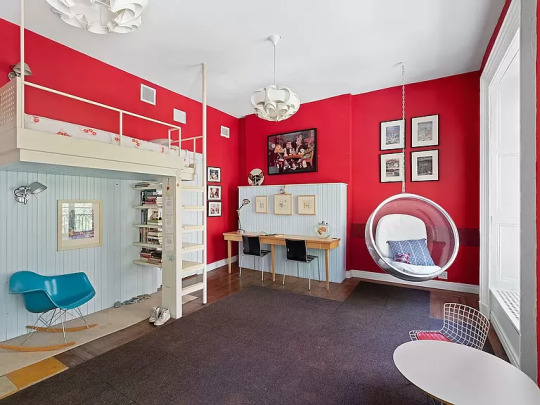
Secondary child's bedroom is also very large.
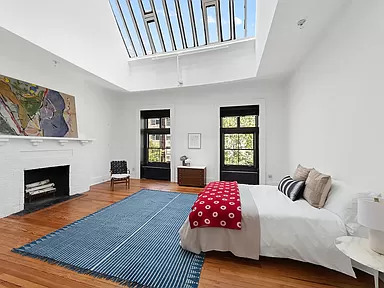
All of the bedrooms are huge. This one on the 5th floor has been modernized and has a beautiful skylight.
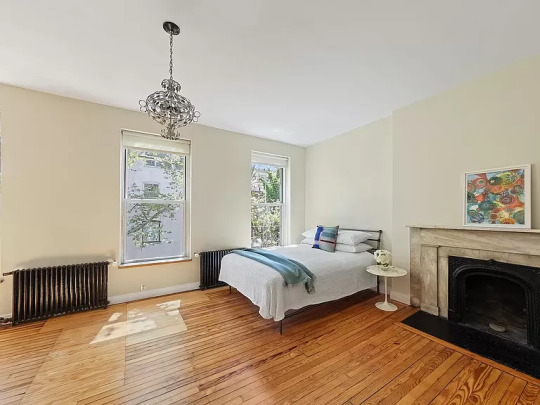
This one is also very spacious and is modernized, including the fireplace.

The ground floor at the garden level has been finished and doors open to the patio. They call this an English Basement.

This is very nice to have, especially in NYC.
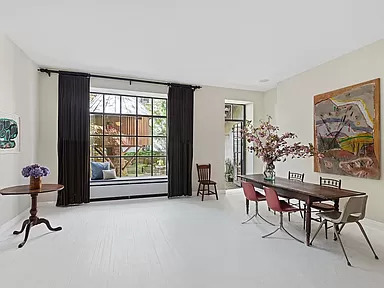

From this room's window you can see the special feature I was talking about.
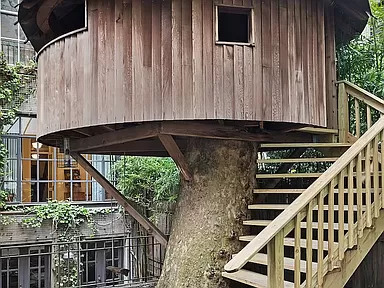
Isn't this treehouse cool?
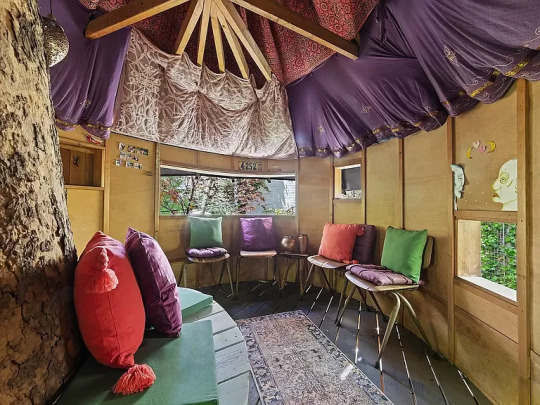
Look at how BoHo the interior is.

This cedar deck is on the roof.

94 notes
·
View notes
Photo

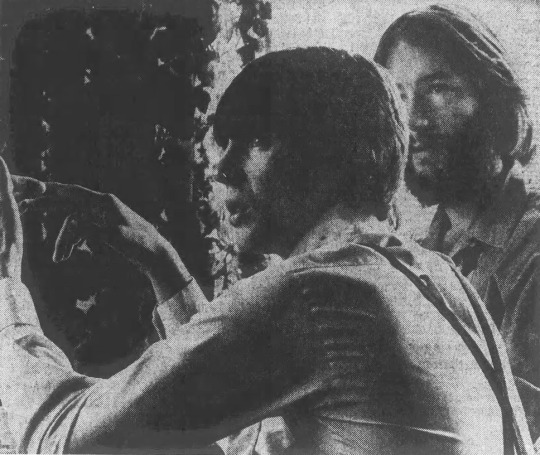
The Monkees promoting Head in the Bay Area, 1968. Photo 2 courtesy of Oakland Tribune.
“If we were considering animals, David Jones would probably be a cocker spaniel; Micky Dolenz a poodle; Mike Nesmith a dachshund and Peter Tork an afghan… not a monkey among them.
But, following an interview with the pre-teen dream makers, we are considering ‘The Monkees,’ who were live and reasonably sane in the Bay Area last week to plug their new movie, ‘Head,’ which opened Wednesday in the Eastbay.
After chatting for an hour, individual personalities emerged… David Jones is… uh, well… a cocker spaniel; Micky Dolenz, a poodle….
There is just no way to describe the four musician-actors who have probably absorbed more sarcasm from critics, more distrust from the public and endured a faster-paced schedule than any other rock group on Planet Earth.
There is something unreal about the four of them together — in an ‘in person’ interview in a posh hotel suite with promotion agents in the background.
Their friendliness, cleanliness and politeness are real but their togetherness falls apart trying to come together.
By now, anyone who reads even one of the world’s live languages knows they were brought together for the first time to star in a TV series by the same name. A marketable item made up of ex-jockey and musical-comedy (‘Oliver’) star David Jones; Grown up TV ‘Circus Boy’ wonder Micky Dolenz; country-western-folk singer from Texas, Mike Nesmith, and Greenwich Village vintage guitarist Peter Tork.
The four speak to each other as acquaintances and one gets the impression of a working-hours-or-sessions relationship only.
They appear to be a little too polite to each other, to aware of each other for comfort.
Peter defers to Micky’s talent as a director. ‘You know, like we were doing one TV show with Micky directing,’ Peter imitates Micky’s muggings.
‘He takes the script, flips it open and says, “Let’s see here now… we shoot starting with page seven… here boys,” he calls over the camera crew and in bright sunlight shoots in four hours with no rehearsal what it normally takes 12 hours to shoot.’
Micky grins, bows politely with a ‘Thank you, kind sir.’
[…]
‘We did some shows that we really liked,’ Peter said. ‘But there were so many formula shows where Micky played crazy villains, David always got the girl… we just couldn’t take another season of it.’
‘In addition to the “7 to 7” hours at the studio,’ David said, ‘we’d have to get a song out for the show, plan concerts, rehearse for and record albums. Some nights I’d work until 3 a.m. then have to be back at the studio for makeup at 6 a.m. the same day.’
Still, their critical success came with their Marx-Brothers-ish approach to comedy, that aspect of their careers which has been the most time-consuming.
‘The Monkees’ don’t see it that way. Mike plots their future in music with visuals as an accompaniment rather than the focus. ‘Music was always the major thing even in our series,’ he said. Most reviews and public response do not agree with this. Past the pre-and-early-teens, people can more or less take or leave the ‘Monkees’ sound and it was considered little more than background to innovative comedy on their show.” - article by Peggy King, Oakland Tribune, December 7, 1968
#Peter Tork#Davy Jones#Micky Dolenz#Michael Nesmith#The Monkees#Monkees#Tork quotes#60s Tork#Head (1968)#long read#The Monkees Season 1#The Monkees Season 2#1968#(sorry about the photo only pic)#can you queue it
47 notes
·
View notes
Text
She turned and looked at me through narrowed eyes. I can see, she said, that you are a most interesting man.
In her diary, there was nothing about corkscrews, but I was described as “handsome, sensual, ironic.” I wasn't fooled: All the young men in her diary were handsome, sensual, and ironic.
Broyard, Anatole. Kafka Was the Rage: A Greenwich Village Memoir. New York: Vintage Books, 1993. Print.
15 notes
·
View notes
Text
books
there are a few books I've read recently, like in the last year, that no one ever talks about. they're not the booktok or tumblr darlings so it's hard to find other people who are interested in them. anyway most of these are at least subtextually queer and written prior to 1970, and those vintage queer vibes go so fucking hard. like once you read pre-1970s queer lit it's really hard to read a modern LGBT romance.
Another Country by James Baldwin. James Baldwin was an actual icon. He lived between New York City and Paris and wrote profoundly human books about race, gender, and sexuality while also being an American civil rights activist and orator. Another Country is Baldwin's third novel, published in 1962. It follows a group of artists in Greenwich Village and their various relationships with one another. It looks at racism, Black masculinity, interracial relationships, homosexuality, and bisexuality, and it explores all of these societal issues through the microcosms of different romantic and sexual relationships between the characters. Baldwin's writing is like Jazz. It is rhythmic, smooth, and breathtaking. If you liked Giovanni's room, read this. It is much more nuanced in its exploration of both race and sexuality.
The Left Hand of Darkness by Ursula K Le Guin. Le Guin's mind is revolutionary. She is everything jk r*wling is credited for, except far better as her most famous books center people of color and androgynous people. She published the first The Earthsea Quartet, a series about a boy wizard at a wizarding school, in 1964 and was never credited as inspiration by r*wling. The Left Hand of Darkness was published in 1969 and won both the Hugo and the Nebula that year. The book follows a human who visits a planet where he finds that its inhabitants are all completely androgynous for the majority of their lives. It is a beautiful exploration of love, trust, and the ability to see past societal conventions to truly love and understand other people.
The Haunting of Hill House by Shirley Jackson. Shirley Jackson is perhaps best known for her short story The Lottery, or unfortunately for the incredibly unfaithful Netflix TV adaptation of this novel. Published in 1959, The Haunting of Hill House follows Eleanor Vance, a woman in her early 30s who has about the maturity of a 19-year-old, as she is recruited along with a group of others to live at the mysterious Hill House. The book is essentially psychological horror and follows Eleanor as she is driven mad by her own feelings of otherness and isolation from the world. There is also some incredibly lesbian subtext in the novel between the two female main characters which adds really interesting layers to Eleanor's feelings of otherness. It's a quick and compelling read and gives interesting insight into the lives of two women in the late 1950s who cannot adhere to the standards of womanhood set for them in society.
#books#book recommendations#james baldwin#another country#giovannis room#queer books#queer book recommendations#the left hand of darkness#ursula k le guin#the haunting of hill house#shirley jackson#the lottery#booktok#lgbt books
8 notes
·
View notes